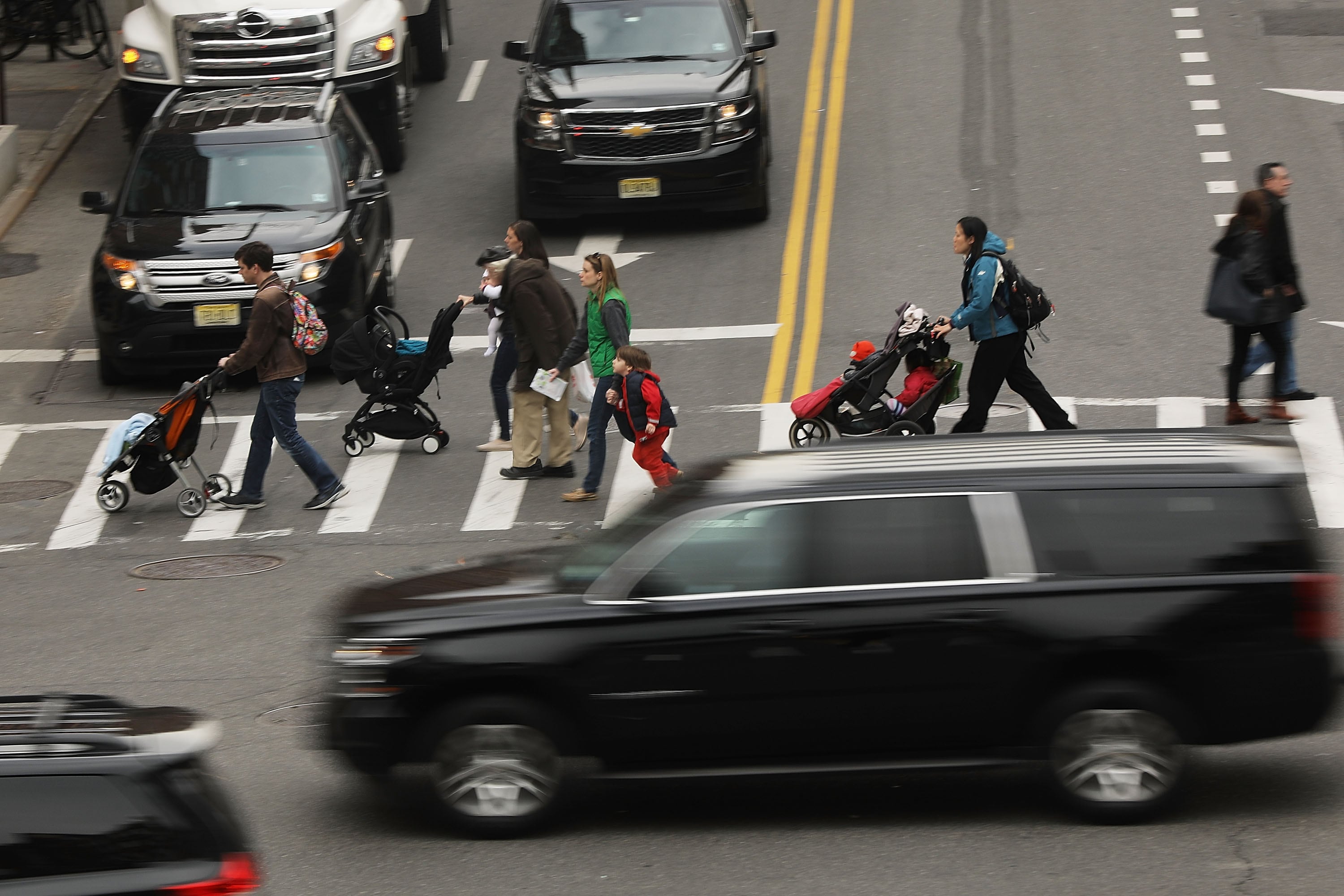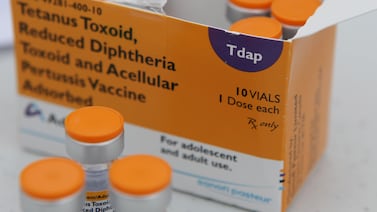Public health, explained: Sign up to receive Healthbeat’s free New York City newsletter here.
Signaling pedestrians to cross intersections at least 7 seconds before cars significantly reduces the risk of pedestrian injuries in New York City, according to a new study from Columbia University researchers.
“Resequencing traffic lights to give pedestrians a brief head start compared to vehicles reduces pedestrian injury crashes by about one-third, which is a remarkable impact for such a simple intervention,” Dr. Christopher Morrison, a study author and assistant professor of epidemiology at Columbia’s Mailman School of Public Health, said in an email.
These “leading pedestrian intervals” help make people on foot more visible in crosswalks, particularly for drivers turning through intersections. In New York City, the interval typically gives pedestrians 7 to 11 seconds to cross before cars get a green light.
The study from Morrison, lead author Siddhesh Zadey and other Columbia researchers, published July 18 in Nature Cities, suggests that expanding the use of the safety feature could significantly reduce pedestrian injuries in New York City.
The majority of the city’s traffic injuries occur at intersections. In 2022, the Department of Transportation added safety features to more than 1,000 intersections, including installing leading pedestrian intervals, raising curb crosswalks, and adding all-way stops. Still, the city continues to be deadly for pedestrians, with recent fatal crashes in Chinatown and Sunset Park.
Nationwide, traffic-related pedestrian injuries are a significant risk to public health, with more than 8,000 pedestrian fatalities and 140,000 emergency department visits related to non-fatal crashes in 2022, according to the Centers for Disease Control and Prevention.
In New York City, the DOT recently announced that pedestrian fatalities declined 19% during the first half of this year compared to the same period last year, to 51 deaths from 63. Officials attributed the traffic fatality reductions to the city’s Vision Zero initiative, highlighting interventions like speed cameras and traffic redesigns.
In their study, Columbia researchers analyzed injury data from 2013 to 2018 at 6,003 intersections across New York City, nearly half of which had leading pedestrian intervals installed. During that time period, 340,541 crashes resulted in 25,608 non-fatal pedestrian injuries and 291 fatal injuries.
Researchers found that intersections with leading pedestrian intervals were associated with a 32.9% reduction in the risk of total injuries, and a 32.8% reduction for non-fatal injuries, compared to intersections without them. Their analysis did not show a significant reduction in the overall risk of fatalities, which Morrison said is likely due to having “too few fatal crashes during the study period for our statistical analyses, which is really a good problem to have.”
The time of day also contributes to injury risk. Researchers found that giving pedestrians head starts during the daytime significantly reduced the risk of total, non-fatal and fatal injuries, likely due to increased visibility.
The analysis suggests that leading pedestrian intervals are effective at reducing the risk of pedestrian injuries and should be implemented at the roughly 30,000 intersections across the city without them, researchers said.
“A public health approach for injury prevention emphasizes using multiple complementary interventions,” Morrison wrote. “LPIs are a powerful approach to preventing traffic crash injuries, and they are an important complement to other prevention strategies that apply to vehicles, roadways, pedestrians, and motorists.”
Eliza Fawcett is a reporter covering public health in New York City for Healthbeat. Contact Eliza at efawcett@healthbeat.org.







